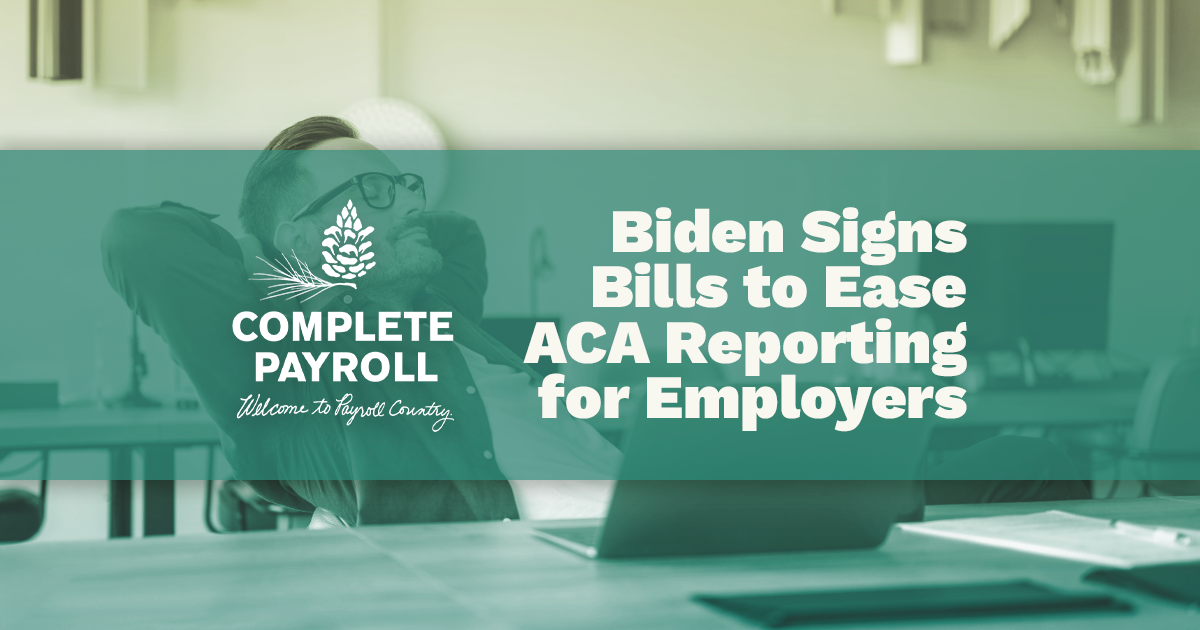If your employees are having trouble filling out their W-4 tax form, help may be on the way in 2025.
In its November report, the Internal Revenue Service Advisory Council (IRSAC) has proposed a series of significant changes to the W-4, with the intention of streamlining the completion of the form, and preventing any surprises when employees are filing taxes, due to under-withholding.
Reverting the W-4 to its pre-2020 version
The last significant attempt by the IRS to simplify the the W-4 was back in 2020.
As you may remember, our own Ashley Hamilton had a few opinions about the new form, and some advice on how to navigate it:
Despite the changes, employees still found the additional field prompts in the 2020 update confusing. The IRSAC's proposed 2025 update would roll back the W-4 to its pre-2020 format, but keep the current version available as an optional method for one year.
In addition to making the form simpler for employees, the IRSAC believes this rollback will future-proof the W-4 for when certain provisions of the Tax Cuts and Jobs Act (TCJA) expire.
Simplify the form for entering multiple jobs and spousal income
The IRSAC argues that the current W-4 options for reporting multiple jobs and/or when there is additional household income from a spouse "may overwhelm and confuse taxpayers." As a remedy, the IRSAC is proposing:
- Renaming Step 2: “I work multiple jobs or my spouse also works.”
- Removing steps 2(a) and 2(b) from the face of the form and refer to the instructions for more information, but retaining support for steps 2(a) and 2(b) on the IRS website and in the W-4's instructions.
- Revising step 2(c) so that it applies to all employees who have multiple concurrent jobs.
- Add a checkbox to step 2 for taxpayers who are married filing jointly (MFJ), but would like withholding under the single filing status.
"Future proof" the W-4 from changes to the child tax credit
Step 3 of the current W-4 contains specific values for income and calculation. The IRSAC argues in their report that the uncertainty surround the value of the child tax credit, the degree to which the CTC will be refundable going forward, the other dependent credit expiring, and the resumption of dependent exemptions may result in inaccurate withholding.
To illustrate the need for this change, the report cites an example from 2021:
Here are the IRSAC's recommendations:"...when the child tax credit was partially refundable, many taxpayers received lower refunds than expected or had a balance due because of duplicate accounting for the credit; once through employer withholding, and once through the advance."
- If the IRSAC's first recommendation of rolling back the W-4 to the pre-2020 version is adopted, to prompt taxpayers to enter the total number of withholding allowances (dependents). This method would not consider the child tax credit, or any potential other dependent credit associated with dependents.
- For taxpayers sticking with what would become the optional 2020 version of the W-4:
- Revise Step 3 to require the number of dependents and each dependent’s date of birth. This would serve as a computational bridge if the value of the CTC fluctuates and/or becomes fully, or at least partially, advanced, and accounts for the unclear future of the other dependent credit and dependent exemptions.
- Add an alert to Step 3 reminding users that because only one taxpayer may claim a dependent, a dependent should only be claimed on one Form W-4 (if the taxpayer has more than one job or the taxpayer’s spouse also has a job). This alert would also be reiterated in the W-4 instructions to prevent underwithholding for taxpayers.
- Indicate that Step 3 is optional, and explain the reason for this more thoroughly in the Form W-4 instructions.
Standardize the withholding exemption claim format for electronic forms
Currently, if an employee wants to claim a withholding exemption on the W-4, they must write "exempt" in the area below Step 4(c). There is no way to replicate this when filling out a W-4 electronically, so this requires them to submit a physical copy.
The IRSAC is calling for a uniform way to claim exemption that would work the same whether the employee is filling out electronically or physically.
Educate taxpayers on when and how to update their W-4
There is a common misconception that the only time an employee needs to fill out a W-4 is when starting a new job.
The IRSAC recommends that a revised W-4 should include an alert reminding employees of when it is recommended that they update their W-4. These circumstances include:
- a major change in income
- a change in marital status
- a change in the number of dependents
- when a dependent reaches age 17
The alert would appear in bold above the W-4's signature line, and the IRSAC goes on to suggest that a checkbox be required, forcing users to acknowledge that they read the alert.
Note: If your employees need help figuring out how much to withhold for taxes, the IRS has a very handy Withholding Estimator on their website.
The IRS suggests using the withholding estimator in the following scenarios:
Access the IRS' Withholding Estimator here.
- When submitting a Form W-4 after the start of the year.
- When expecting to work only part of the year.
- When experiencing changes during the year, such as marital status, number of jobs, number of dependents, or changes in deductions or credits.
- When receiving dividends, capital gains, Social Security, bonuses, or business income, or being subject to the Additional Medicare Tax or Net Investment Income Tax.
When preferring the most accurate withholding for multiple job situations
Educate taxpayers on who should complete and submit their W-4
A common issue that HR professionals see is employees asking their advice on how to fill out the W-4. IRSAC suggests another alert at the top of the W-4 explaining to the employee, "Your employer cannot complete the form for you; view the instructions if you have questions. Tax law requires your employer to withhold taxes based on your entries."
Effectively communicate any changes ahead of them taking effect
if the IRS acts on the recommendations of the IRSAC, the changes would take effect January 1, 2026. This would mean that, for at least the first year after adoption, there will be three versions of the W-4 out there for employees to submit: the pre-2020 version, the current version, and the revised version.
The IRSAC recommends that the IRS develop a "robust communication campaign" to explain to employers and their employees what their options are in terms of what forms are available, and how to support each. The campaign should be constructed in concert with professional partnerships such as accounting firms, CPA's, PayrollOrg, SHRM, and others.
The content in such a campaign should be created across various media, and be disemminated through traditional media outlets, as well as on all appropriate social media platforms. The idea is to "saturate resources so employers know about the changes."
Read the full text of the IRSAC's November Report Here: https://www.irs.gov/pub/irs-pdf/p5316.pdf


















 Get Instant Blog Notifications
Get Instant Blog Notifications

